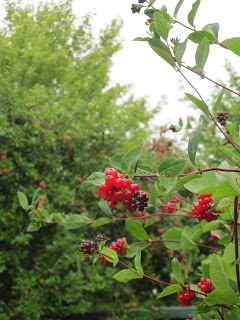 On a showery Thursday afternoon, we stopped in Romsey on our way home. This small Hampshire market town has a network of narrow streets, imposing Georgian buildings and rows of smaller cottages not far from the centre. The town is dominated by Romsey Abbey. The original Abbey was built in Saxon times but the present building dates from the time of the Normans. It was an important Abbey until the dissolution of the Monastries by Henry VIII in 1539. At this time, the community of the Abbey was dispersed and the building itself was saved as a church for the people of the town. Inside the Abbey is a list of names of the Abbesses who governed the community of nuns from Saxon times until 1539.
On a showery Thursday afternoon, we stopped in Romsey on our way home. This small Hampshire market town has a network of narrow streets, imposing Georgian buildings and rows of smaller cottages not far from the centre. The town is dominated by Romsey Abbey. The original Abbey was built in Saxon times but the present building dates from the time of the Normans. It was an important Abbey until the dissolution of the Monastries by Henry VIII in 1539. At this time, the community of the Abbey was dispersed and the building itself was saved as a church for the people of the town. Inside the Abbey is a list of names of the Abbesses who governed the community of nuns from Saxon times until 1539.We arrived just before the shops closed, and my camera battery was running low, so these are just snapshots of our walk around the town as we dodged the showers, spending half an hour inside the beautiful old Abbey as we passed.
My friend Bovey Belle`s late Mother was born in Romsey and was married in the Abbey. I thought of her as we walked the wet pavements and imagined her there as a young girl in the 1920s. I stood in the aisle of the Abbey and thought of her as a young bride, facing the great clear glassed window as she walked away from the altar with her young husband. There are so many layers of history in that ancient place, and now she has become a part of it.

 A rather magnificent Georgian facade for Barclays Bank.
A rather magnificent Georgian facade for Barclays Bank. Lord Palmerston on his plinth in the main square.
Lord Palmerston on his plinth in the main square. The Town Hall.
The Town Hall.
King John`s House is a half timbered mediaeval house which was once thought to be the hunting lodge of King John. However, it has since been found that the house dates from the mid thirteenth century, while King John died in 1216. It is an interesting old building , which now houses the town museum, which we hope to visit again. We managed to walk through the garden just before the doors were locked for the night.

 The mediaeval herb garden smelled fresh and sweet after the rain.
The mediaeval herb garden smelled fresh and sweet after the rain. A little bridge leads out of the garden and across a stream.
A little bridge leads out of the garden and across a stream.After some time in the Abey, we walked around through a back lane and found a terrace of beautiful white Georgian houses, which had rear gardens backing on to the Abbey grounds. Each house had a different character and a pretty front garden. One of the houses was for sale. I would have loved to have looked inside.


























































